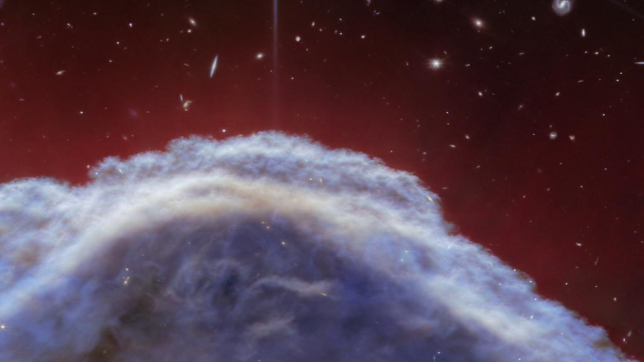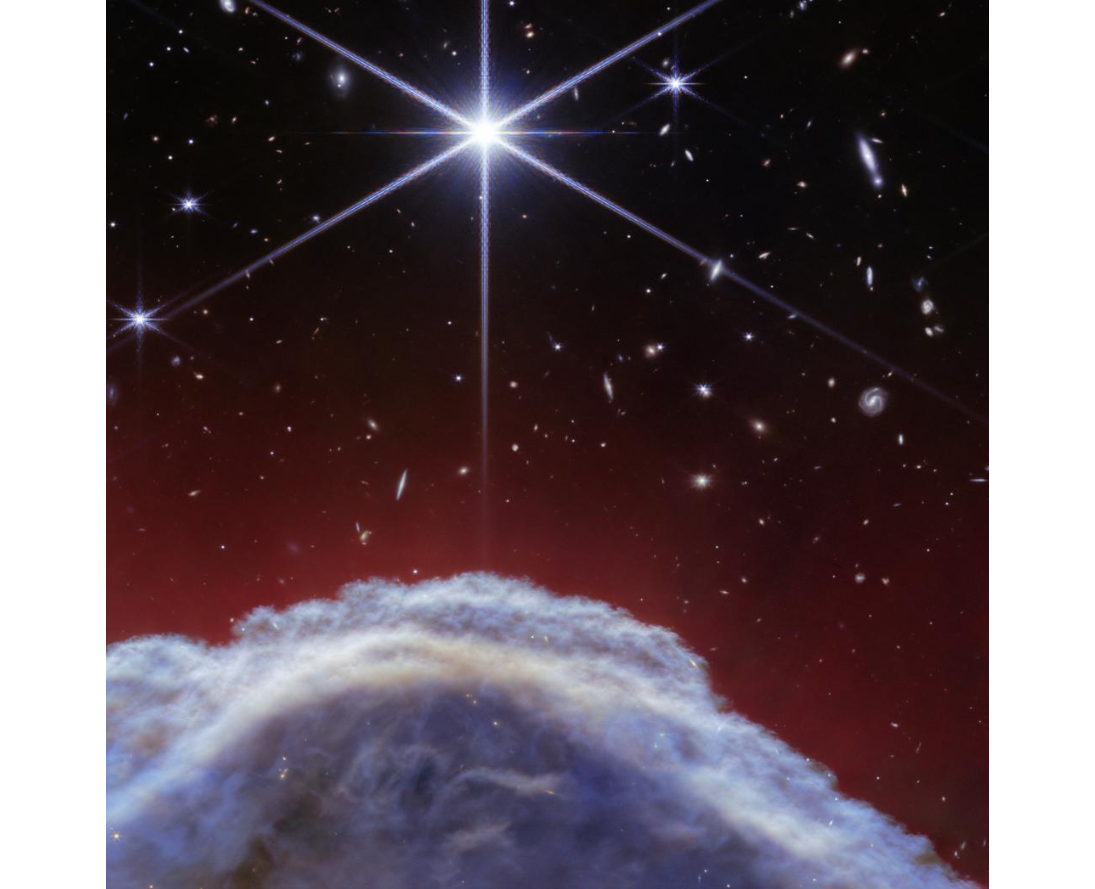James Webb telescope reveals fiery 'mane' of the Horsehead Nebula in spectacular new images
Captured in infrared light by the James Webb Space Telescope, the star-forming Horsehead Nebula is located 1,300 light-years away in the Orion Constellation.

The James Webb Space Telescope has captured the sharpest images yet of the Horsehead Nebula — a vast cloud of equine-looking gas rearing over the constellation Orion.
Earning its name from the thick plumes of rolling gas that constitute its fiery mane, the Horsehead Nebula is a stream of gas rising from Orion B, a molecular cloud located 1,300 light-years from Earth.
Made from a collapsing cloud of gas and dust, the nebula gets its distinctive appearance from its slow dissipation as its outer edges gradually erode. In roughly 5 million years time, the gas will have disintegrated entirely, leaving behind the hot star that illuminates it from the top left edge.
To snap the stunning images, astronomers used the JWST's Near-InfraRed Camera (NIRCam) and Mid-Infrared Instrument (MIRI). True to their names, these cameras capture photons emitted in the infrared spectrum of light as regions of the gas cloud are heated up by young massive stars.

Related: 35 jaw-dropping James Webb Space Telescope images
Studying this region, known as a photon-dominated region (PDR), helps scientists to understand the chemical and physical processes that enable interstellar matter to evolve and for stars to form.
Given its close proximity to Earth and distinctive shape, the Horsehead Nebula is considered one of the best objects in the sky to study how radiation and stellar matter interact, according to the European Space Agency (ESA).
Sign up for the Live Science daily newsletter now
Get the world’s most fascinating discoveries delivered straight to your inbox.
In November last year, ESA trained its brand new Euclid space telescope on the nebula as part of the mission’s debut image release. Using both infrared and visible light cameras, Euclid captured a dreamlike scene of the nebula's head rearing out of a gauzy, pink gas cloud. The new infrared JWST images zoom in for a much more focused and detailed look at the nebula's turbulent mane, revealing the high-speed movement of hot gas within.
The JWST's findings were published April 18 in the journal Astronomy & Astrophysics.

Ben Turner is a U.K. based staff writer at Live Science. He covers physics and astronomy, among other topics like tech and climate change. He graduated from University College London with a degree in particle physics before training as a journalist. When he's not writing, Ben enjoys reading literature, playing the guitar and embarrassing himself with chess.










